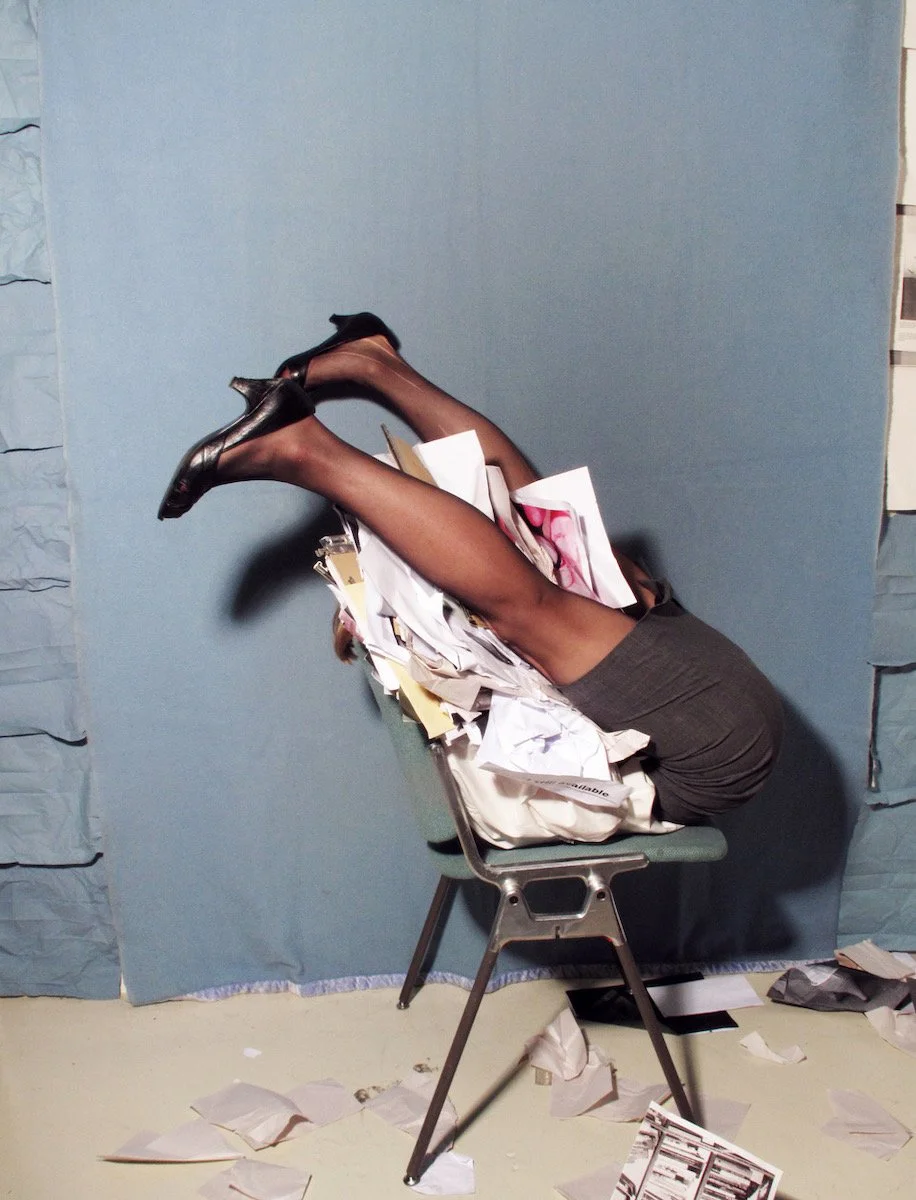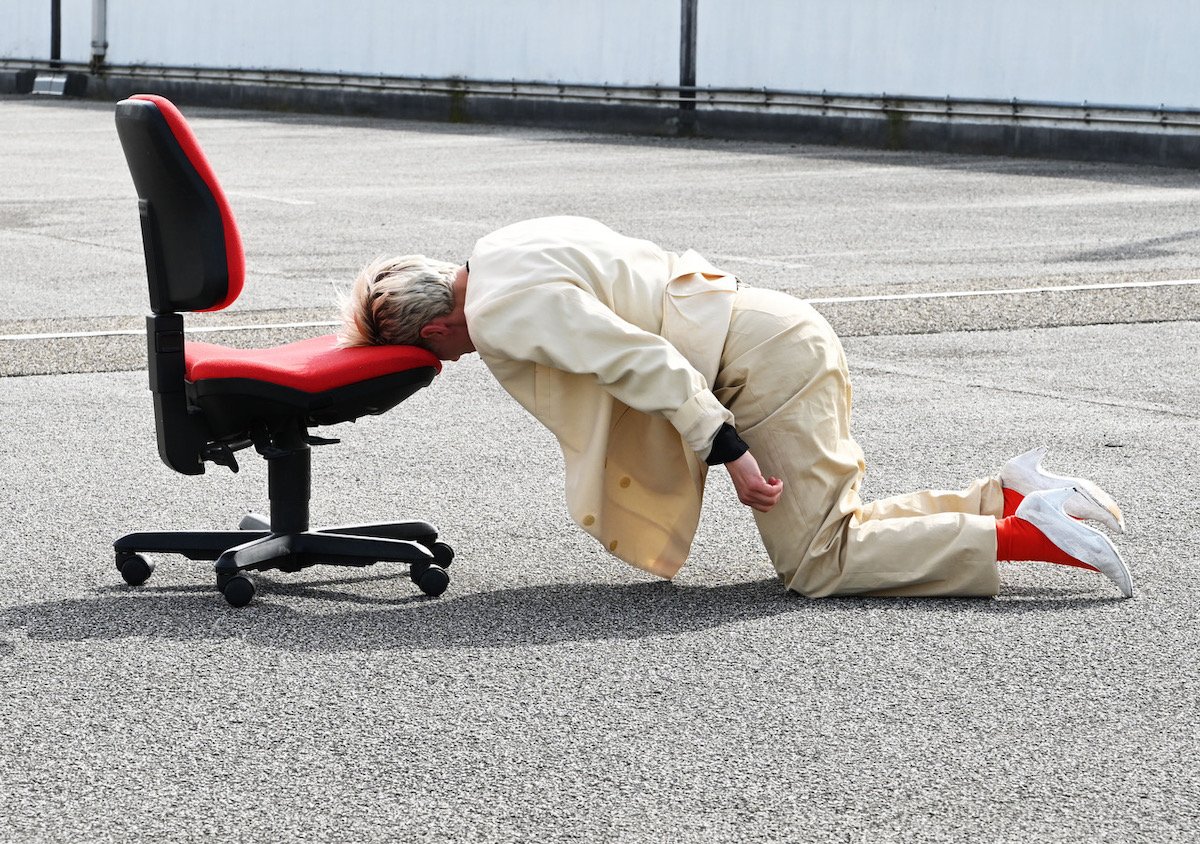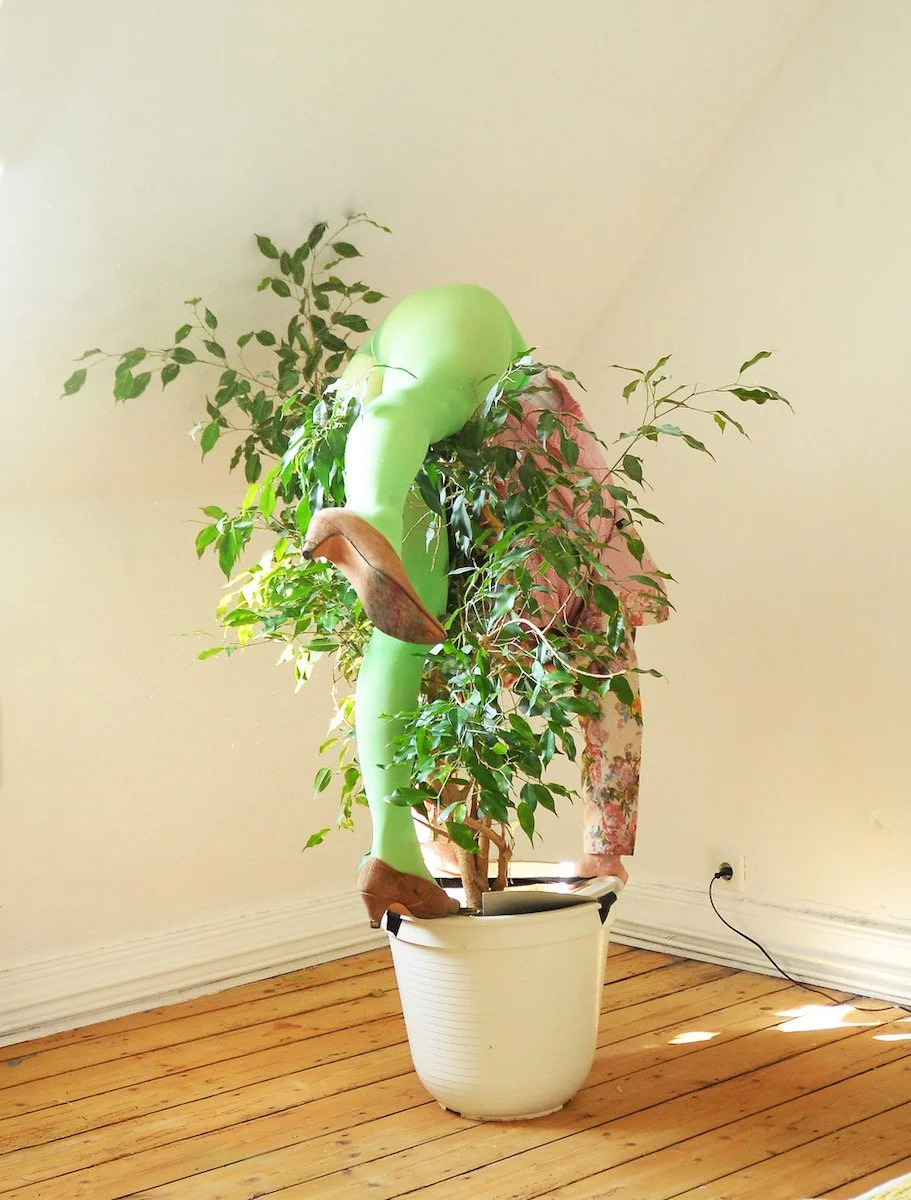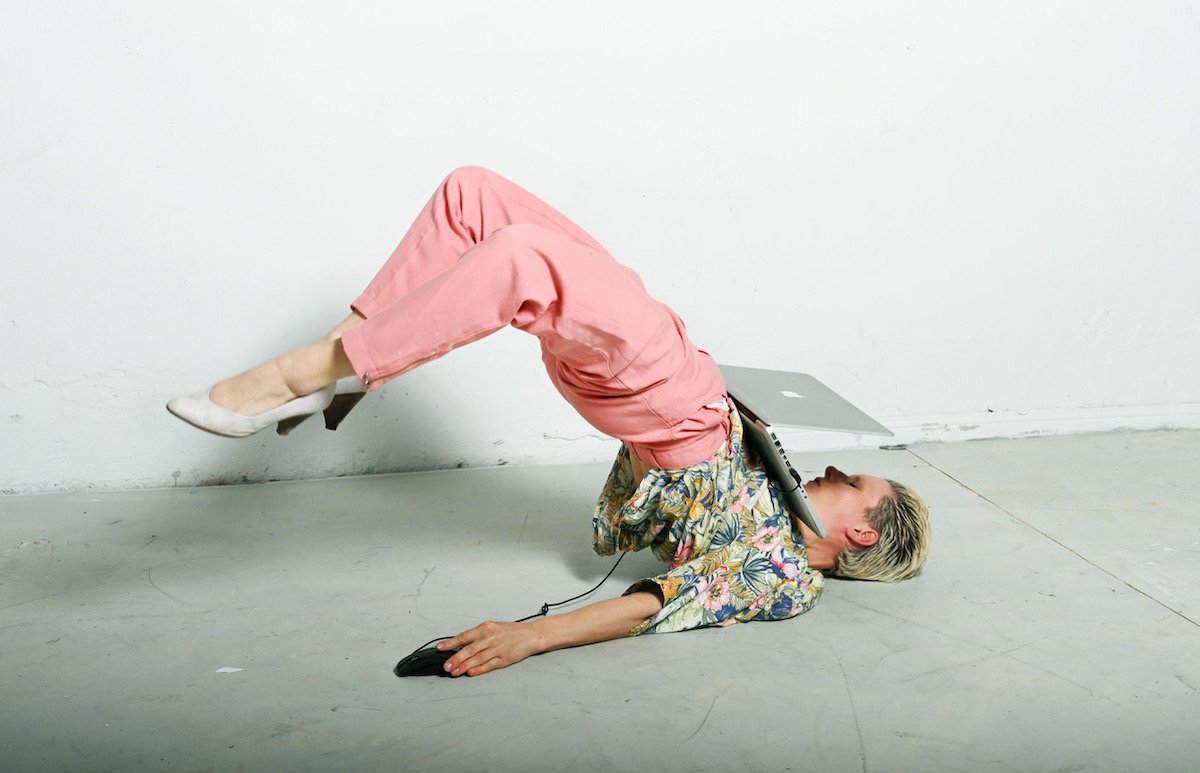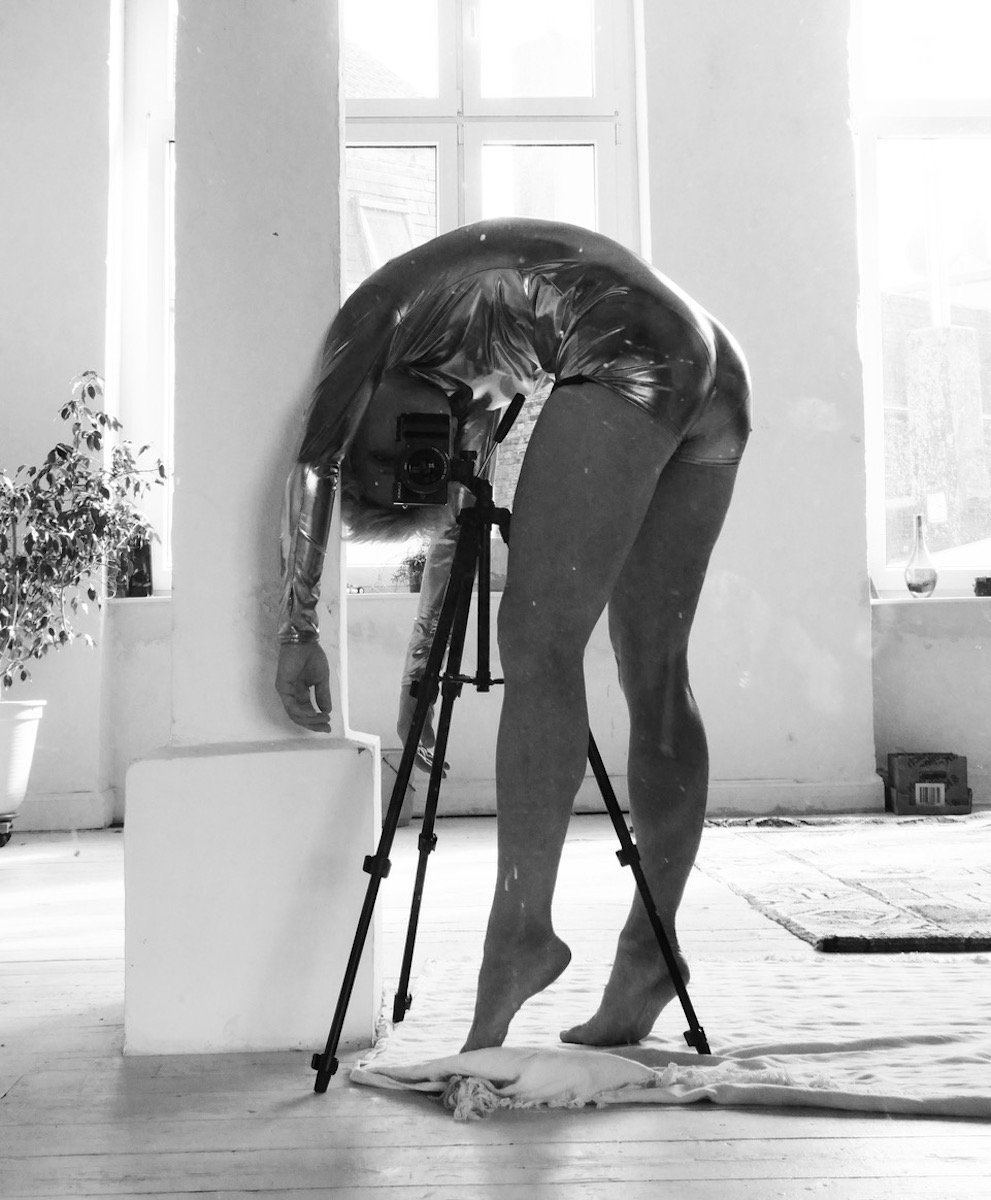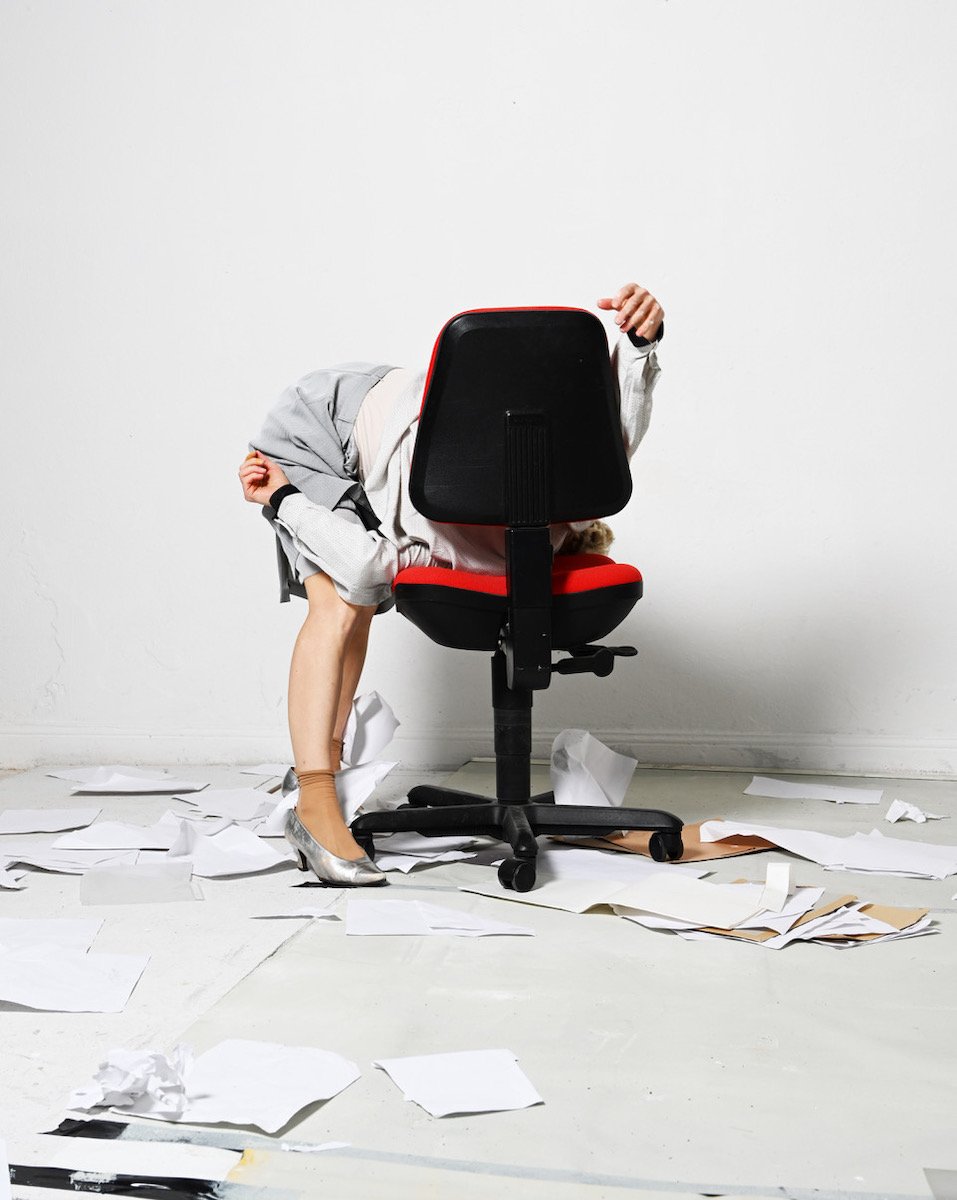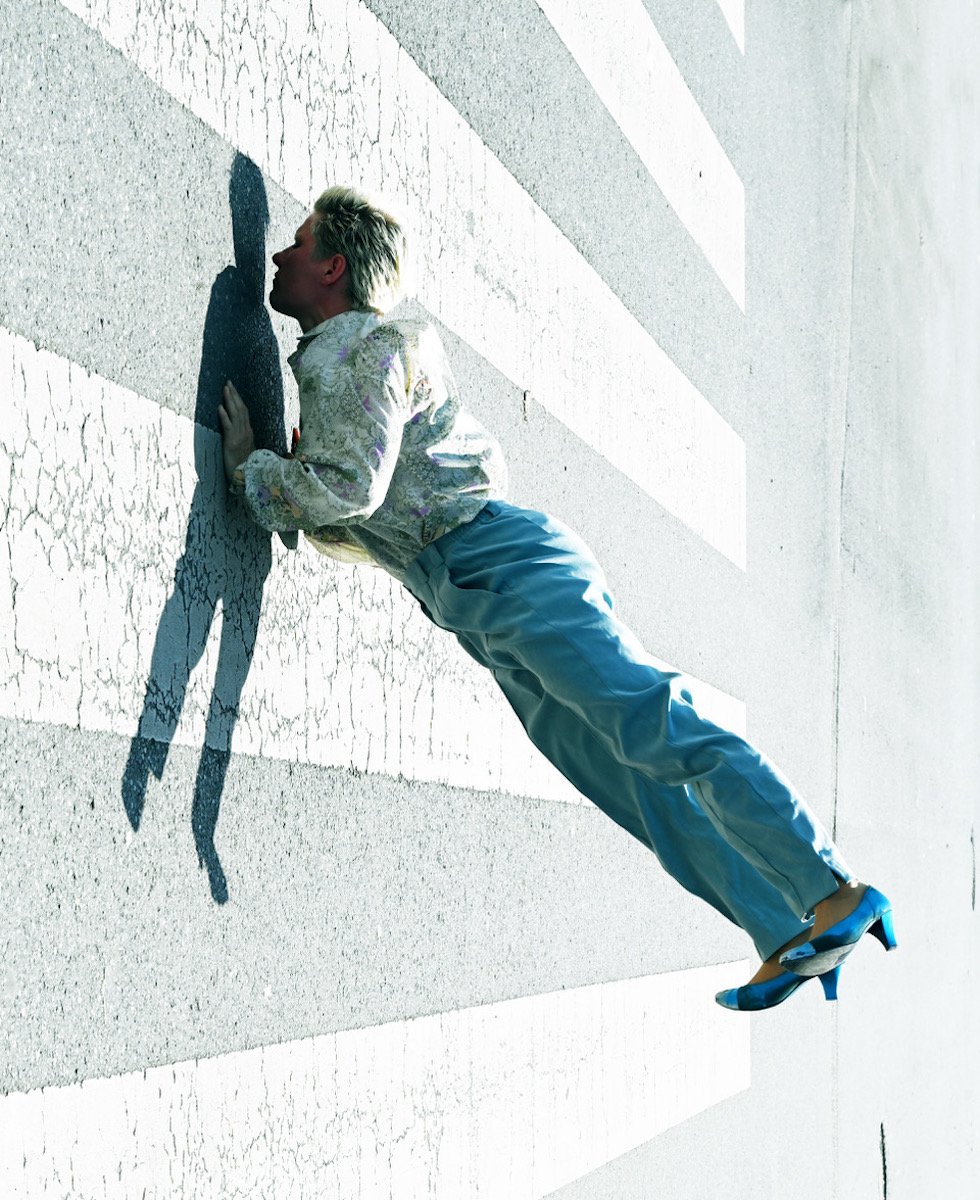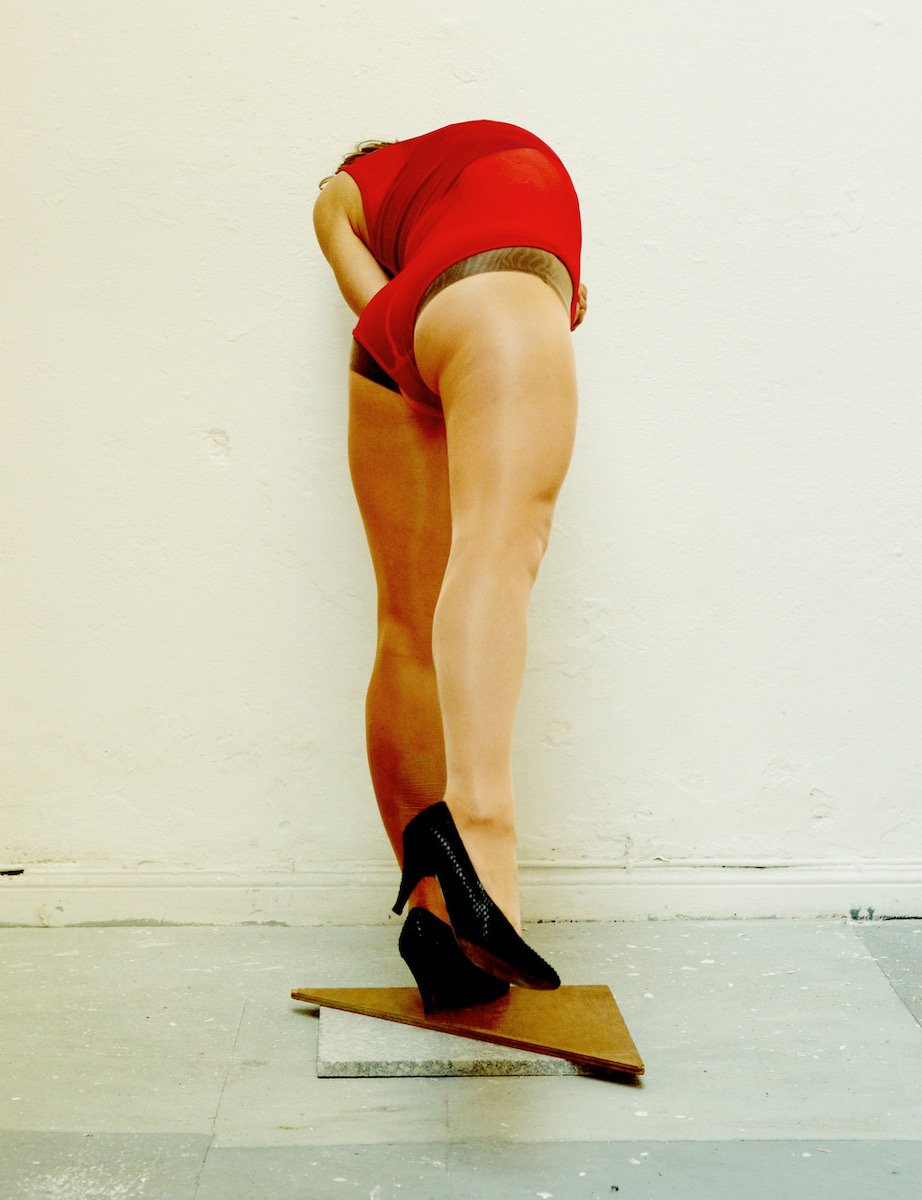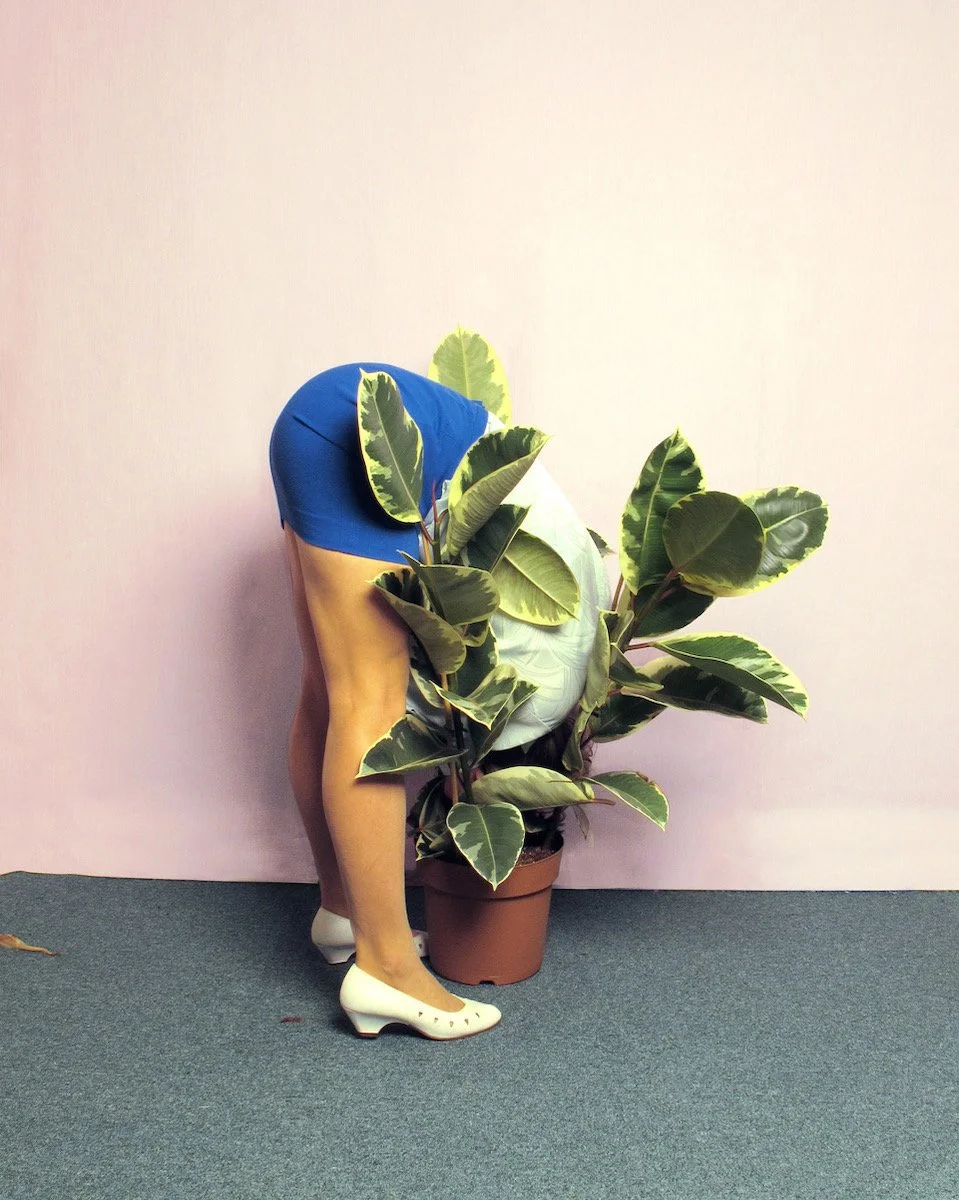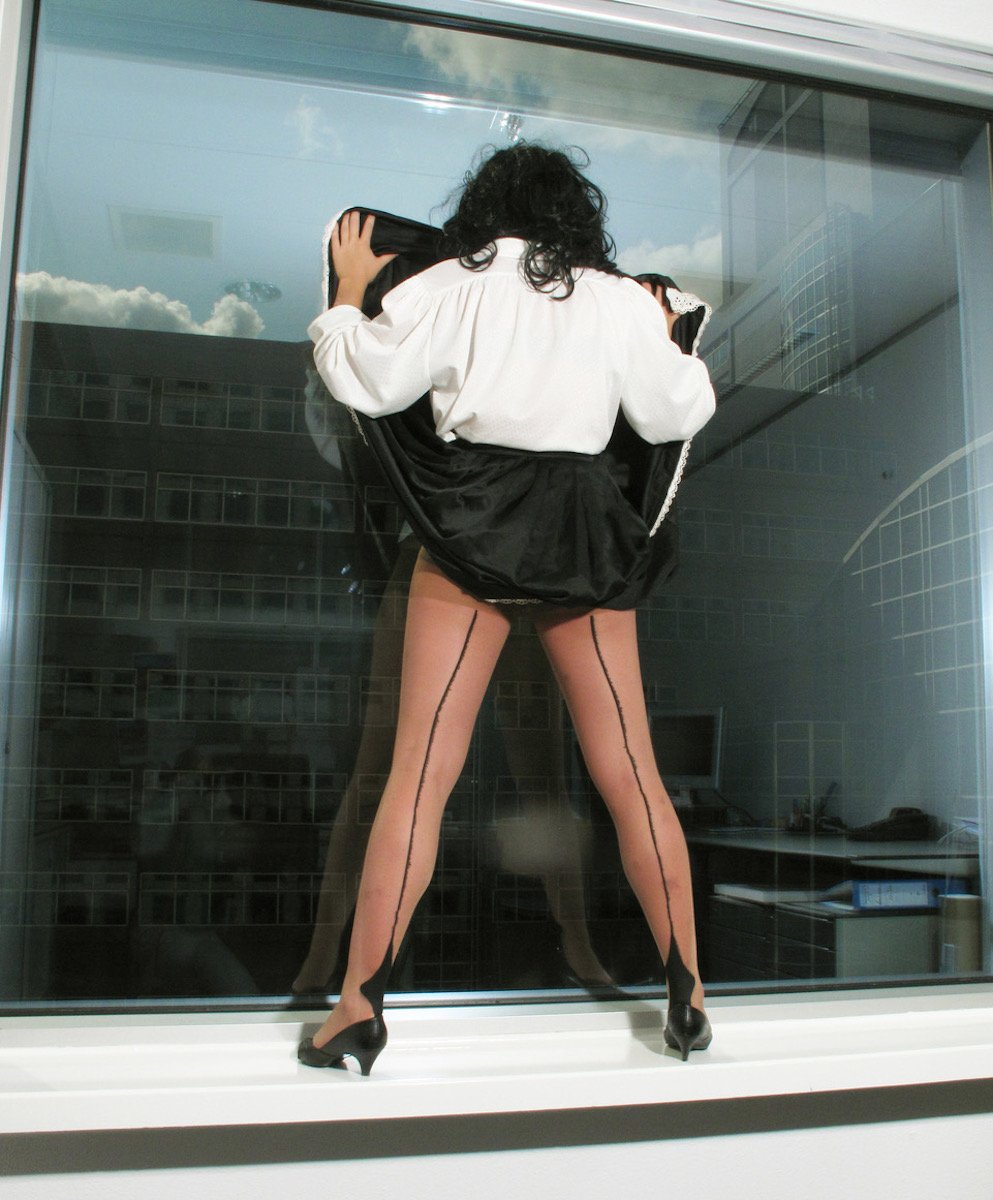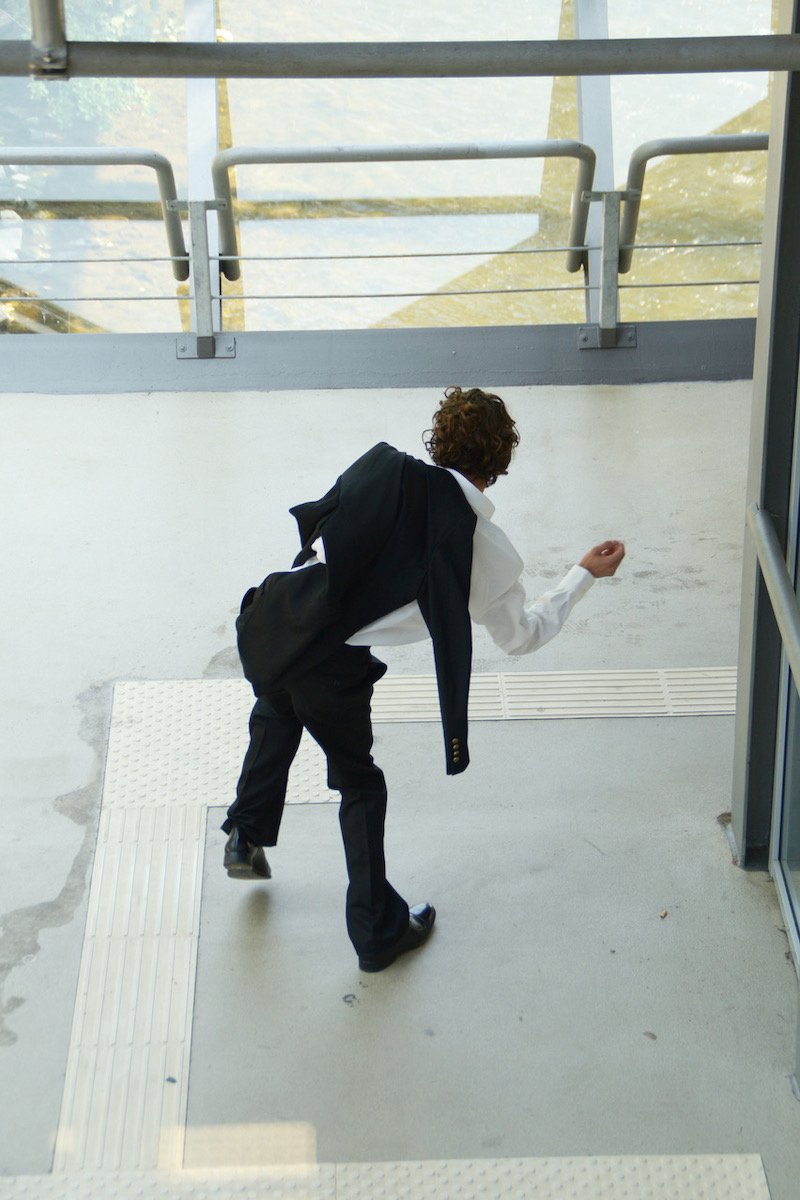Isabelle Wenzel
At the center of Isabelle Wenzel’s practice there’s the consciousness of body politics and the power relations intrinsic to the photographic medium since its origins. Indeed, the camera isn’t a neutral object and system, but rather a medium that has always put the agent, or the photographer, in the position to capture, mould and control the portrait sitter, the land, or generally speaking the other. Wenzel’s take on this power relation is a subverting one: by privileging her subjects’ freedom to express themselves, she rethinks authorship in terms of collaborative creative output.
When did photography and performance encounter in your artistic oeuvre?
They encountered a little bit out of lack. At the time I had an artistic and acrobatic background. I decided to start photography while interested in bodies as forms. I didn’t like the setting of sitting with a model and taking portraits of them. I didn’t like the power situation of being in charge and control of the other without knowing if the person wanted to do this or that pose. So as said, I was interested in the body form and movement, something which has always been part of my life. I started self-modelling. What does that truly mean? Was that a narcissistic move? No, I was simply interested in the body as a form and a tool able to articulate deeper meanings. It’s now 10 years that I have pursued along these lines and performed for the camera and myself. editing by herself. I don't believe in the truth of the photographic act. Photography is about something you make up. Indeed, every moment a person is aware there's a performative act.
How does it feel to perform for a non-human eye? And what differences do you experience when performing for an audience?
Well, performing live pays the way to very clear images whether a camera recording gives the charge, the control to who is directing it. In the live act, there's less control. Performing in front of an audience is more intimate: you invite the people to get close and it gets more real and in the now.
How did your career in the fashion world start?
It started with editorials I was invited to direct. At the start, there were no live performances involved. I grew interested in the fast outcome and the possibility of playing around with garments as if it were a game and exploring how you can force your body to move in given clothes. I soon introduced models to perform for the camera and myself.
How do you control dialogues with the concept of objectification of the body in your work?
The model is not just the muse to the photographer anymore. Traditional roles in fashion photography are outdated: models know what they want to do. Consequently, the person in front of the lens is in charge of directing the medium and the gaze. Authorship also gets rethought: it’s not just the photographer creating an image as the model no longer gives a body and their image but creatively works with the body.
The office setting is a constant in your work. Why so? What are you trying to explore in the relationship of the body to an office work environment?
In 2010 I did my first workspace-set work. The initial idea is very much linked to the reality of actually becoming an artist. When I completed my studies I felt against the capitalistic system of earning money. The possibility of having a nine-to-five job was not an option for me but questions like how do you earn as an artist and such came to me. I soon understood even as a successful creative freelancer you are in the end almost like a regular office worker; but without fixed working hours, work never stops. Even if you spend more time on work you still have a lot of freedom but no financial stability. That’s often a problem. And after the job is always before the next. So it feels like you running all the time. At the end of the day modern media have transformed individuality into a product and we forget about health. Industrialization has brought machinery to give back time to humans but the faster the machines the faster humans need to perform and the less time remains for leisure and self-care. My attachment to the office space is still connected to the will to explore the social aspect of it and our relationship to self-care, relationships and, of course, work.
interview by ILARIA SPONDA
What to read next

